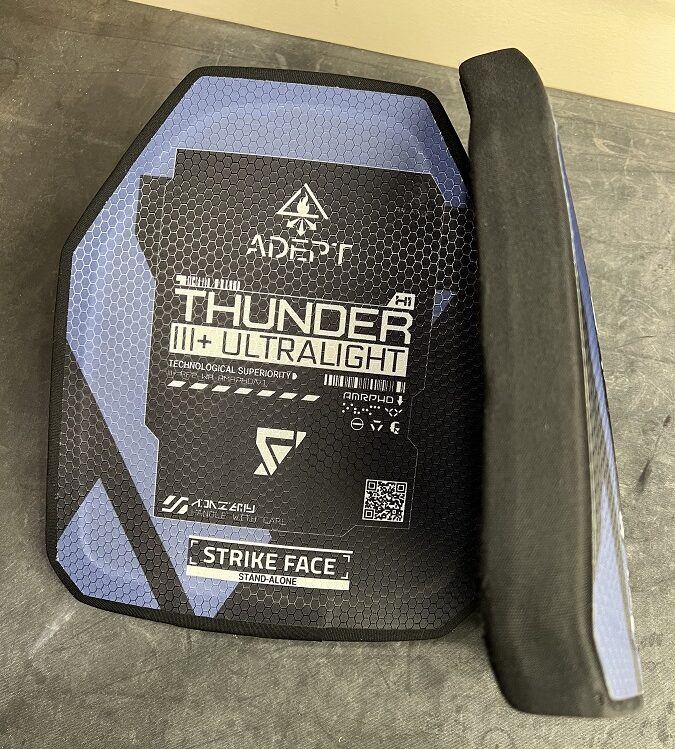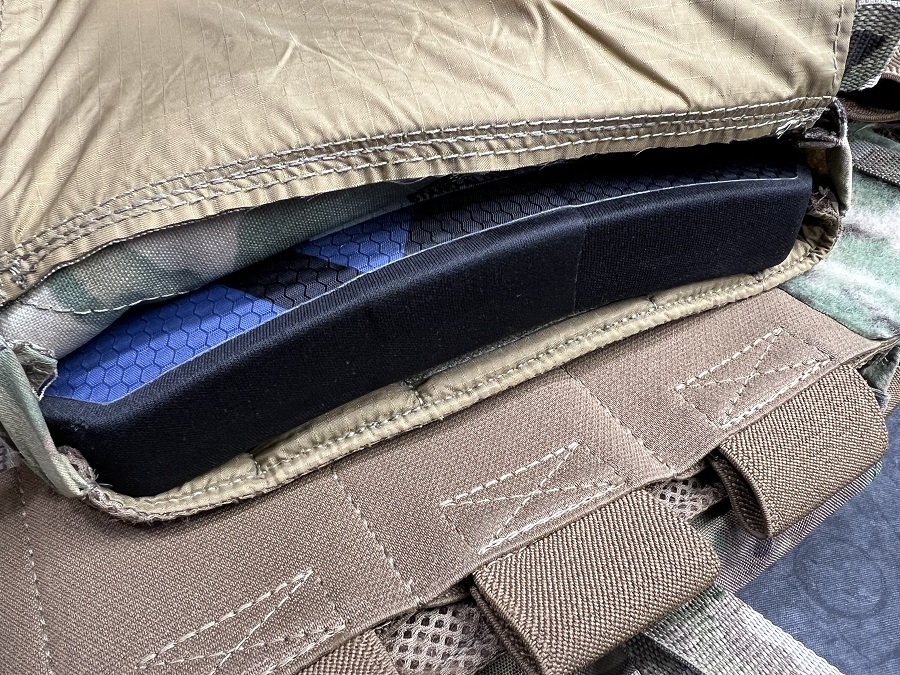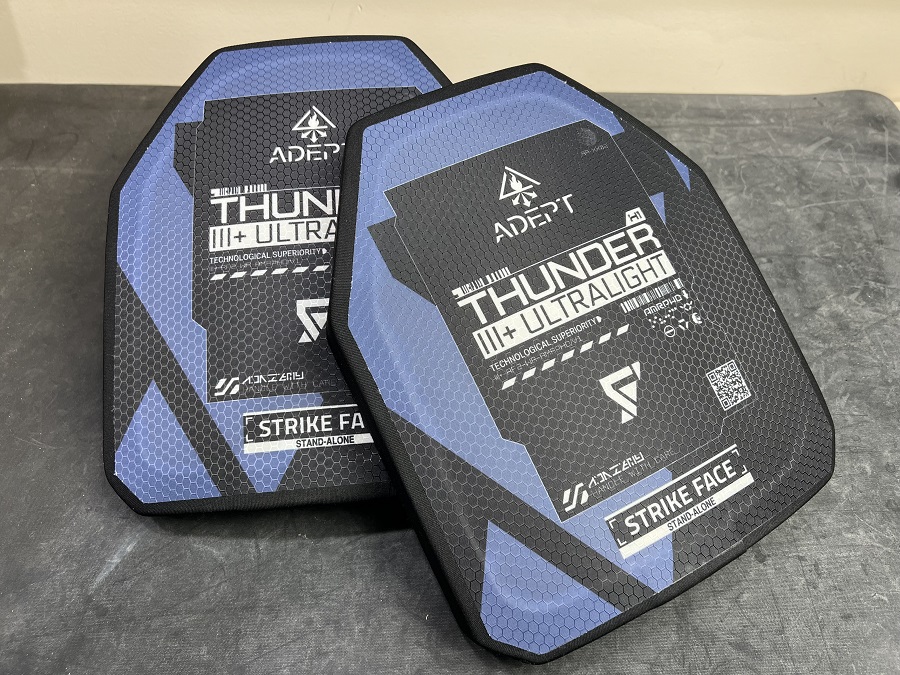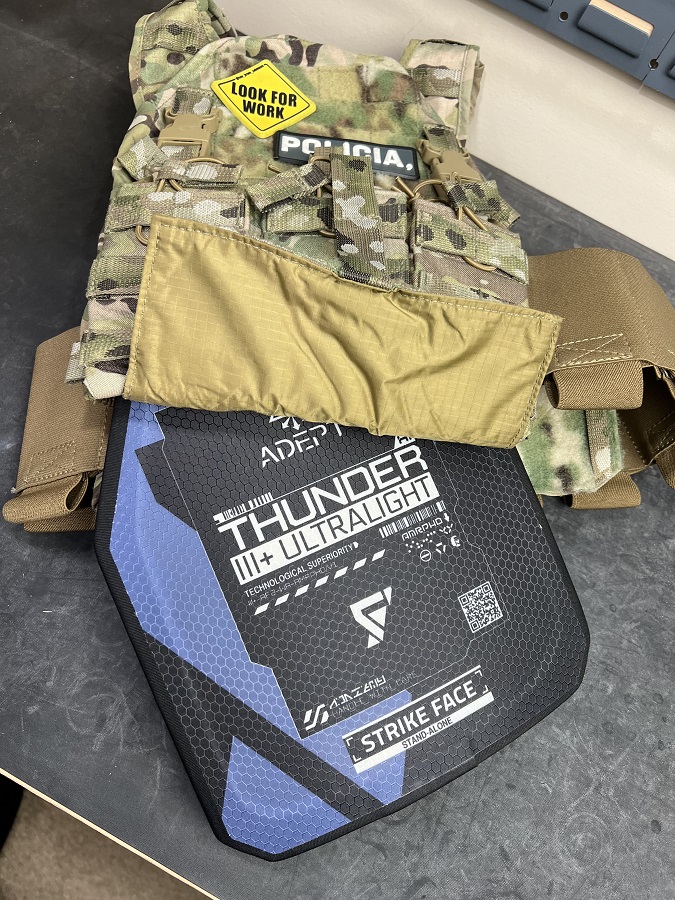As I approach the transition from Law Enforcement to civilian or contractor work, I realized I was going to turn in my issued armor. Our issued plates have come a long way in the last 20 plus years, improving our protection and getting lighter. My first plates were heavy steel level IV rifle rated plates with a rubberized coating, weighing 7.25 lbs each. Current set is a Level III made from Honeywell’s Spectra ultra-high molecular weight polyethylene (UHMWPE) composite fabric, weighing 2.2 lbs each. When you start looking for your own to purchase the value really comes to mind. What am I going to get for the price? What does the “ballistic” ratings really mean? I went looking for a good value that will keep the weight down and the protection up.
I realized this was going to be an investment and most armor is only warrantied for 5 years. It can still be effective beyond that period with proper storage and treating them with care. Keep them out of extreme temperatures and protect them from impacts. You can get them re-inspected every five years. Just like everything else, take care of your kit and it will take care of you. This might mean not doing every bit of your training in them. First thing I looked at was the protective ratings. The National Institute of Justice (NIJ) has been the industry standard recognized by military and law enforcement for as long as I have carried a gun. The current rating system is NIJ 0101.06 (as in version 6) was published in 2008, it rated and tested armor against the then current threats to US military and law enforcement. The NIJ has since been working on a new version NIJ 0101.07 (version 7) that was supposed to be originally published in late 2019, then promised in 2021.
To avoid drilling down a rabbit hole, I will attempt to simplify the ratings specifically for rifle rated plates. Version 6 listed the plates as Level III and Level IV, where Level III can stop 7.62×51 ball and 5.56mm M193 and Level IV could stop up to 30.06 armor piercing. Armor rated to stop 5.56mm M855 Penetrator (green tip), a current risk to soldiers and officers was being listed as Level III+ or Level III++ (depending on manufacture, get in there and read their specifics) meaning they stopped more than the NIJ Level III rating. I found that some manufacturers have both a Level III+ and a Level III++ and it depends on how they tested the M855 or write the descriptions. Do your homework and read through the manufacturers support documents. One company listed a Level III+ plate as defeating M855 at a weight of 2.5 lbs but then when you looked at their own threat classifications it only listed their Level III++ as being rated for M855 and weighed 4.1lbs. The new proposed NIJ 0101.07 version list Rifle Threat Levels in RF, RF1 is equivalent to Level III, RF2 is the new Level III+ and Level III++ specifically defeating multiple hits from M855 and lastly RF3 equivalent to Level IV. Here are two different articles to help understand the versions better: NIJ and Engarde.
With all that in mind, I went looking for plates that could stop M855 and were as light as possible without breaking the bank. I was recommended Adept Armor, part of the Adept Research and Development Firm. They research and develop body armor systems and innovative materials based on their experience in both inorganic chemistry specifically metal alloys, ceramic compounds and organic biochemistry. Using these materials allows them to produce armor solutions that are light, preserving mobility by avoiding being cumbersome. They use their own in house manufactured Amorphoid, a chemically-treated phase-change silicate, built for light armor applications specifically protection against rifle threats.

I selected the Thunder Level III+/RF2 plates. They are multi-curved to SAPI specifications made from a Amorphoid-UHMWPE composite providing edge-to-edge coverage. The Stand-Alone 10×12” plates are 1.1” thick and weigh in at 3.45 lbs each. They were specifically designed for the balance between protection and mobility. They have been a comfortable upgrade to my Level III/RF1 work plates, coming in less than a pound heavier each but providing the extra protection against the M855. They have fit my standard plate carriers, specifically; Crye Precision JPC, Tactical Tailor Rogue Carrier, Eagle Industries PC with cummerbund and First Spear AAC V2 and 5.11 Tactical TacTec Carrier (there was a lot of excess room, but it’s the same with all plates).

The two things that stand out is the 16-20% lighter weight and lower cost than other high-end competitors. These plates are $550 each compared to the competitors $600-800 plus and weigh 3.9 lbs or more (most were in the 4.1 – 5 lbs range). When buying your own gear, value is always a priority. You can find them for less, but it will add weight. If you are ok with the heavier plates and looking at steel, I would still caution you against steel plates due to the spalling risk. These were a solid choice providing protection against multiple hits from M855 and other steel core rounds.
Since Adept is a research and development company there is a page dedicated to information surrounding armor and how it is rated and works found here.
Final Thoughts: These are light weight plates that provide protection against the most common rifle threats you will face both domestic and overseas and come at a price you can afford.

By the numbers:
Comfort – 4.5/5 They fit in just about any current (and older model) plate carriers at a weight that won’t cause fatigue over prolonged periods or wear.
Durability – 4.5/5 They have been tested and meet the NIJ Level III+/RF2 ratings, I don’t plan to test that. I also don’t plan to drop or knock them around.
Functionality – 5/5 They are lightweight and are a multi-curve SAPI cut making them a comfortable choice for rifle rated armor.
Weight – 5/5 3.45 lbs is some of the lightest rifle rated plates out there (by 16-20%) for RF2 threat rating, protecting against M855.
Value – 5/5 These plates are a great value for the level of protection provided at one of the lowest weight options from top manufacturers.
Overall rating – 4.8/5 At this point I feel like a broken record, great value for the level of protection, while avoiding the fatigue of carrying around heavier plates.
I received this product as a courtesy from the manufacturer via Spotter Up so I could test it and give my honest feedback. I am not bound by any written, verbal, or implied contract to give this product a good review. All opinions are my own and are based on my personal experience with the product.
*The views and opinions expressed on this website are solely those of the original authors and contributors. These views and opinions do not necessarily represent those of Spotter Up Magazine, the administrative staff, and/or any/all contributors to this site.
